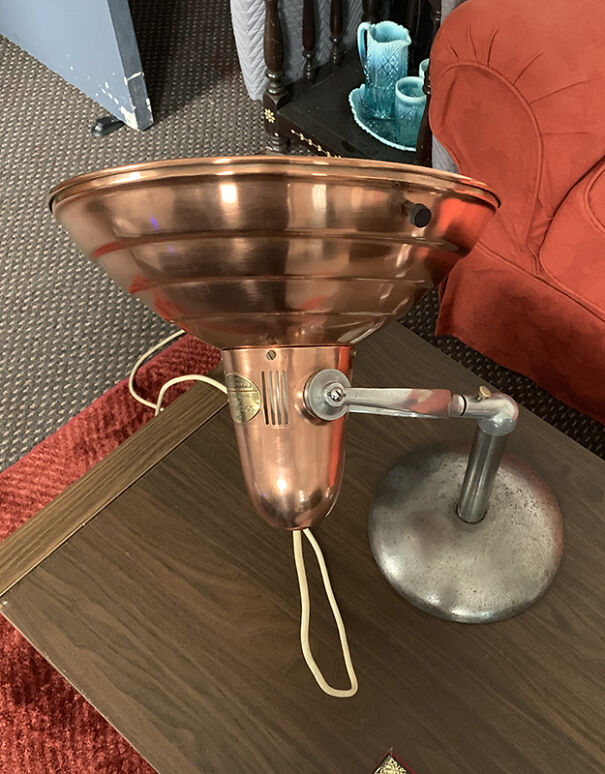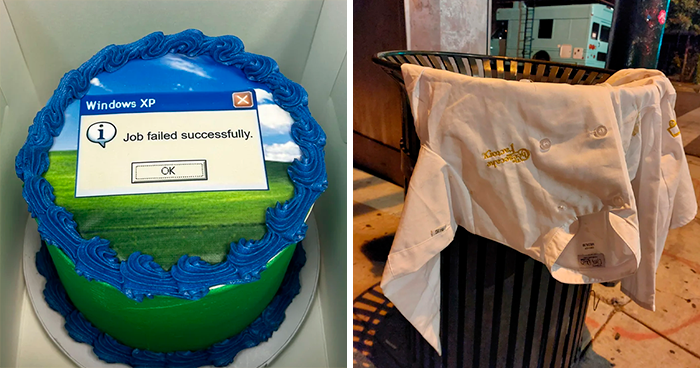I found this lamp waiting to be taken away as rubbish, together with a stained and threadbare sofa and armchairs. It was covered with flaking old dark green paint, and the base was covered with rust, but I found it interesting and decided to rescue it.
First I removed the old heating element – in the vitreous ceramic socket which you can see behind the new bulb socket was an old heating element which projected out as far as the bulb which has now taken its place. It was a two-sided cone-shaped element embedded in porous ceramic, each side protected by a metal grill. There are no pictures of it because it fell apart easily as I removed it, the ceramic crumbling into pieces.
The next task was to remove the old paint. We (myself and my beautiful partner) could see that underneath the paint and rust, it was made of copper (the dish and cone), aluminium (the fork that holds the cone), steel (the pole) and iron (the base); and the screws that hold the cone and the socket are brass.
I’ve included some pictures of the tools used. The only tools not shown are my power drill and work bench.
Mostly the paint and oxidation (which had dulled any exposed copper were removed by several hours hard work scrubbing with the wire wool, but for the base and washers between the fork we used the electric hand tool with abrading wheels and wire brush wheels, and then used the wire wool.
After all rust and oxidation was removed (including inside the cone), we finished off with Brasso. We took it apart completely and cleaned each piece separately and then reassembled it. Isn’t it beautiful? Why would anyone want to cover up all that lovely shiny copper and aluminium and steel and iron with dull dark green paint?
Having done this, the question was then how to install a bulb socket without making any structural changes, we wanted to convert it while keeping all the original features and parts. In the pictures which show inside the dish you can see what holds the bulb socket. This was cut out from an old lampshade I bought from a charity (thrift if you’re American) shop for £1, and two holes drilled at each end. The small steel angle pieces which attach it to the dish are from a Meccano set. This nicely in keeping with its general purely functional design.
The label on the cone says “The Sollux 400 Infrared Lamp, Hanovia Ltd, Slough.” This company still exists, and today they make modern UV and IR lamps.
We have tried to find out more about this lamp but without success, and I have never seen another one like it, except for some 1960s reproductions, and a couple of others obviously made later by Hanovia with simpler bases. Mostly what you’ll find if you search for Hanovia lamps with this are smaller, have smaller aluminium dishes, and sit atop a tall stand, and have infrared bulbs quite different from the heating element which was in it when I found it. Note the bakelite knob on the side of the dish – in use it must have become too hot to touch.
We did contact Hanovia, who showed little interest (which surprised me) and they said they couldn’t tell me anything about it because their records don’t go back that far. We think it must pre-date the aluminium lamps you can find online, which were made in the 1920s and we suspect it might be a workshop prototype; partly because of how the dish is attached to the cone. You can’t really see this in the pictures, but whereas the cone has four holes for screws, the dish has eight.
And we have no idea of its value, except that we have seen later models which have been repurposed for lighting – with parts removed and changes made – sell for about £500.
But we don’t want to sell it, we just want to know more about it. Is there anyone out there who can help us in this respect? When was it made? Is it, as I think, a workshop prototype?
I’ve added here another item we found (languishing in a collapsing old shed), a bicycle lamp made in New York in 1895.

 Dark Mode
Dark Mode 

 No fees, cancel anytime
No fees, cancel anytime 










































4
1